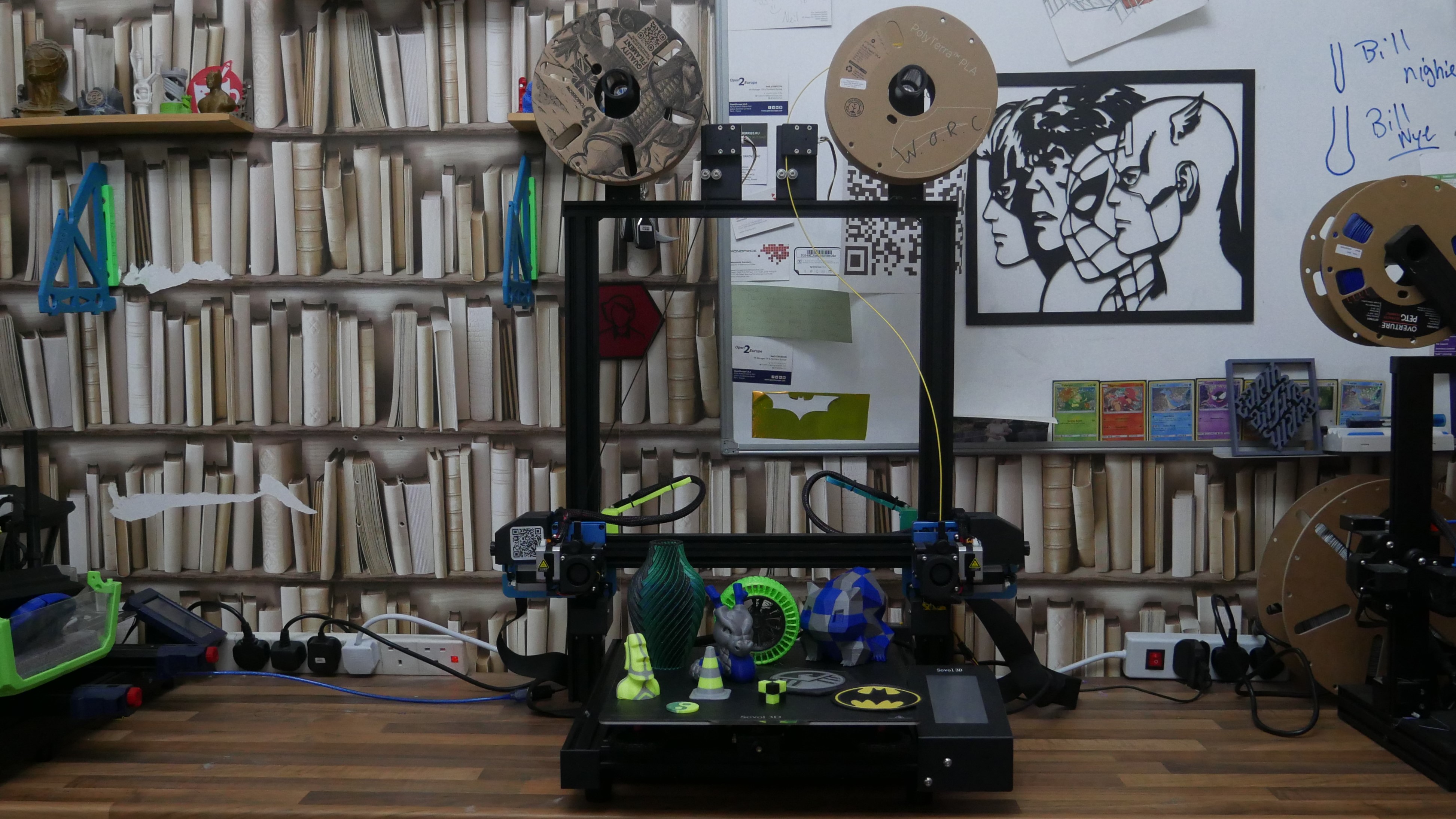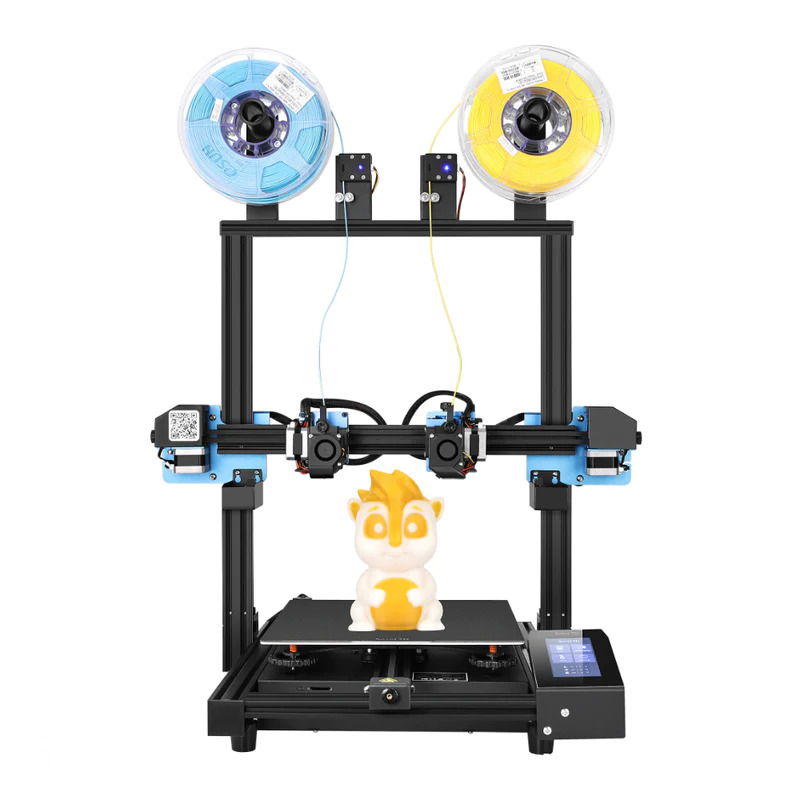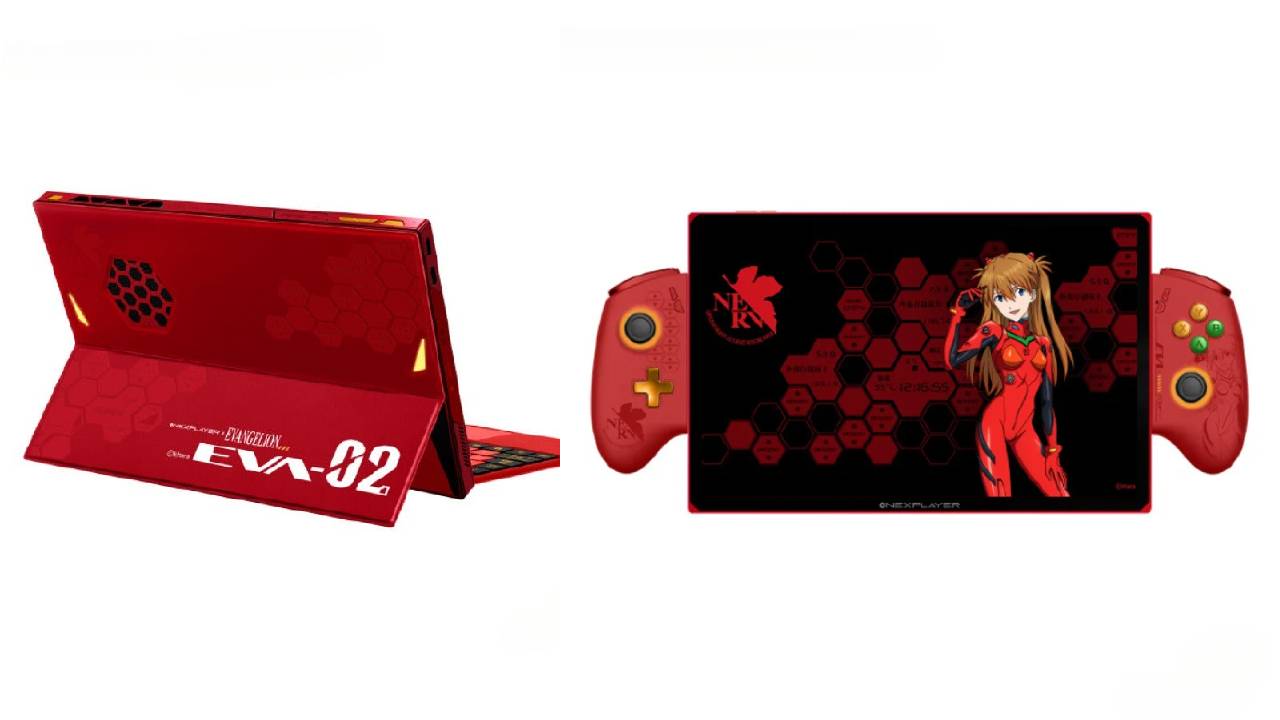Windows Central Verdict
At $560 the Sovol SV04 is the cheapest IDEX printer from a reputable brand, it's easy to put together but requires time and patience to get it set up just right and make the two colour, or two material prints you want to show off.
Pros
- +
+ Dual colours and Dual materials are super neat
- +
+ Standard V6 nozzles
- +
+ Large touchscreen
- +
+ Full-sized SD card
Cons
- -
The calibration needed is slow and meticulous
- -
The fans are very loud
- -
You'll need a lot of space
- -
Multiple material/colour printing is slow
Why you can trust Windows Central
Sovol is a name many of you might not have heard of, but they have been around for a while. Sovol is utilising components of some larger brands like Creality in order to keep costs down, but also giving you more for your money, like this IDEX SV04 for just $560. IDEX Stands for Independent Dual Extruders, whereas other printers might have two print heads on the same carriage, an IDEX setup can move each head independently. The SV04 comes in a huge box mostly assembled, all you need to do is attach the vertical piece to the base with four screws, two on each side, and then wire up the cables of which there are 3 on each side, as well as the filament run-out sensors up top.
The SV04 is a large format printer with a build volume of 300mm x 300mm x 400mm, though that build volume can change when you use the IDEX functions. In single or dual colour mode you can use the entire 300x300 build volume in X and Y, but in the duplicate mode where both heads do the same motion to produce the same print at the same time, you halve that build volume in the X axis to 150x300, and in mirror mode, where the two heads perform opposite motions on the X axis to create two mirrored parts, you get even less, roughly 120x300mm, all the modes retain the same 400mm Z-axis height, however.
Pricing and availability
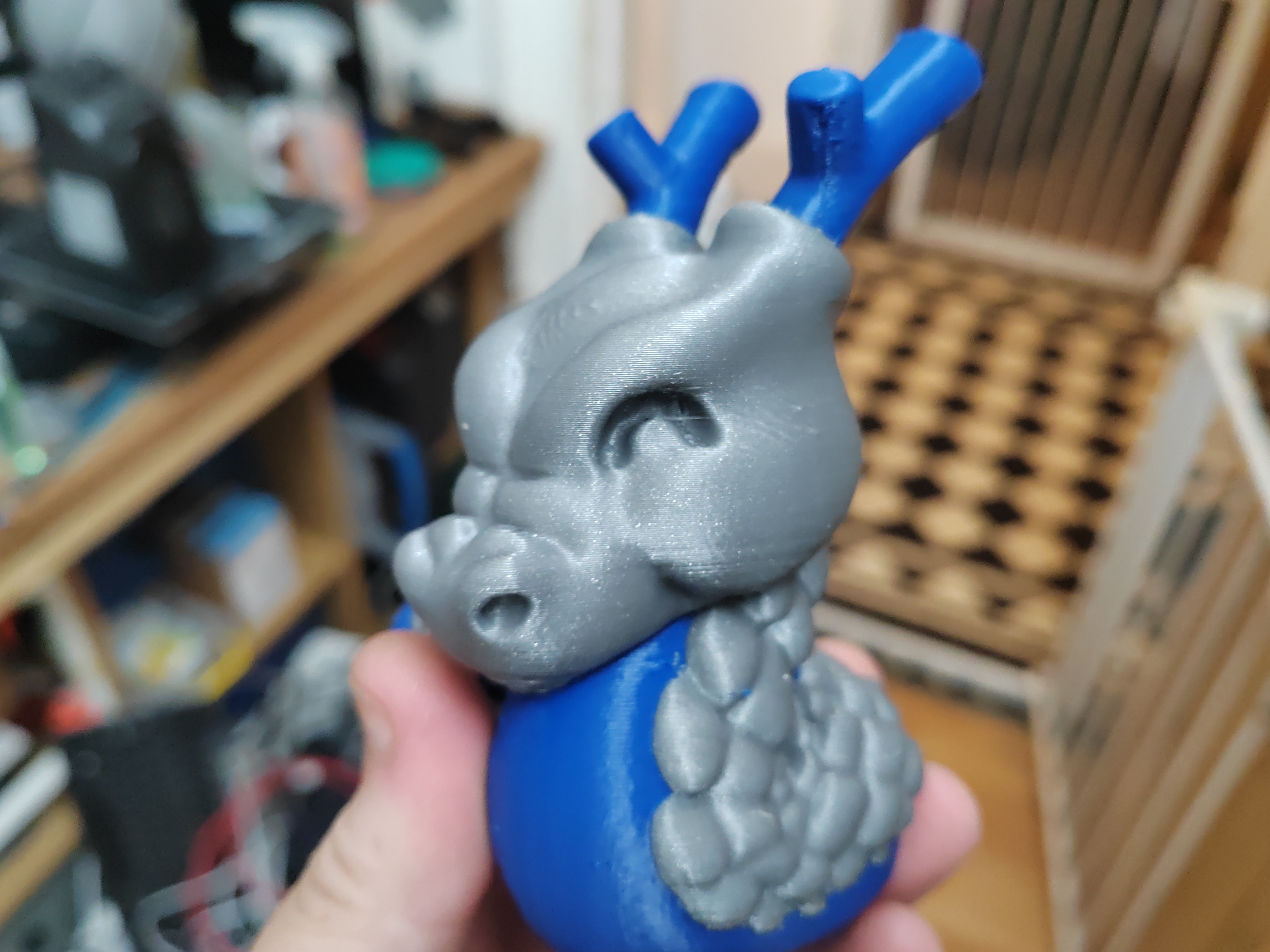
The SV04 is available from Sovol’s own website currently for $509, however, it normally retails for $560. It is also available on Amazon US for $560 currently, however it usually retails there for $599.
If you choose to purchase the SV04 from Sovol directly there are options you can add. One of those is a filament dryer, for those pesky hydrophobic filaments like PETG, Nylon and others for $559 currently but normally $619. Then there are two options for different nozzle packs. The first is a pack of five 0.4mm tungsten nozzles, these are wear-resistant for filled filaments like carbon fibre or glass fibre PLA/PETG/Nylon. The last is a pack of tungsten nozzles in sizes 0.2mm, 0.3mm, 0.4mm, 0.5mm and 0.6mm. Both nozzle packs retail for $519.
What you'll like
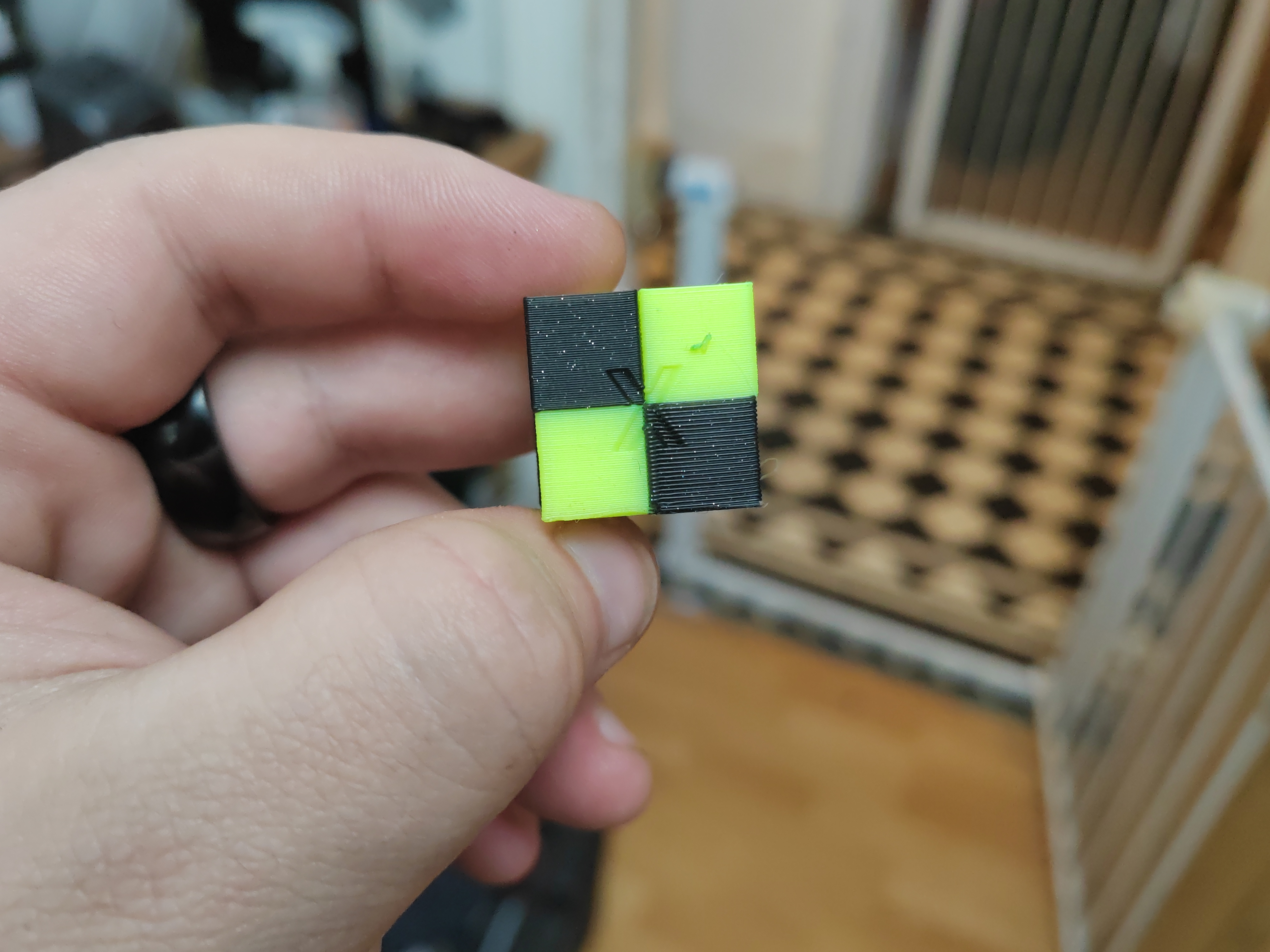
There is a lot to like about the SV04, whether it be the IDEX system itself, or the fact it has direct drive extruders so things like flexibles are much easier to print. Maybe the fact it has a large flexible magnetic build plate with a polycarbonate-like sheet, in fact, it is all of those. Starting with one of the smaller things, the direct drive extruders. The extruders on the Sovol SV04 are based on the Titan aero by E3D, as an open source product people are allowed to take it and modify it and that is what was done here. Whilst this type of direct drive extruder is not my favourite it is incredibly capable. With a 3:1 gear ratio, you are able to get away with using a smaller motor which is lighter and uses less power. The direct drive extruder here is mated to a hotend that is not much to write home about, it is a PTFE lined heartbreak, with a V6 style nozzle, the nozzles being M6 thread and based on the V6 means you can use any of the plethoras of nozzles made for that ecosystem over the last decade including hardened steel, nickel plated copper ones, or even polycrystalline diamond ones.
The flex plate is a similarly small thing (well, it is physically large, but you get it) but after having two large format printers with glass sheets, having one that is removable is very appreciated. Large models have an affinity for sticking incredibly well to build surfaces, and even when cooled might not release easily, I’ve had this happen on my Anycubic Kobra Max since review a few times and nearly damaged the very large piece of glass more times than I would like to admit.
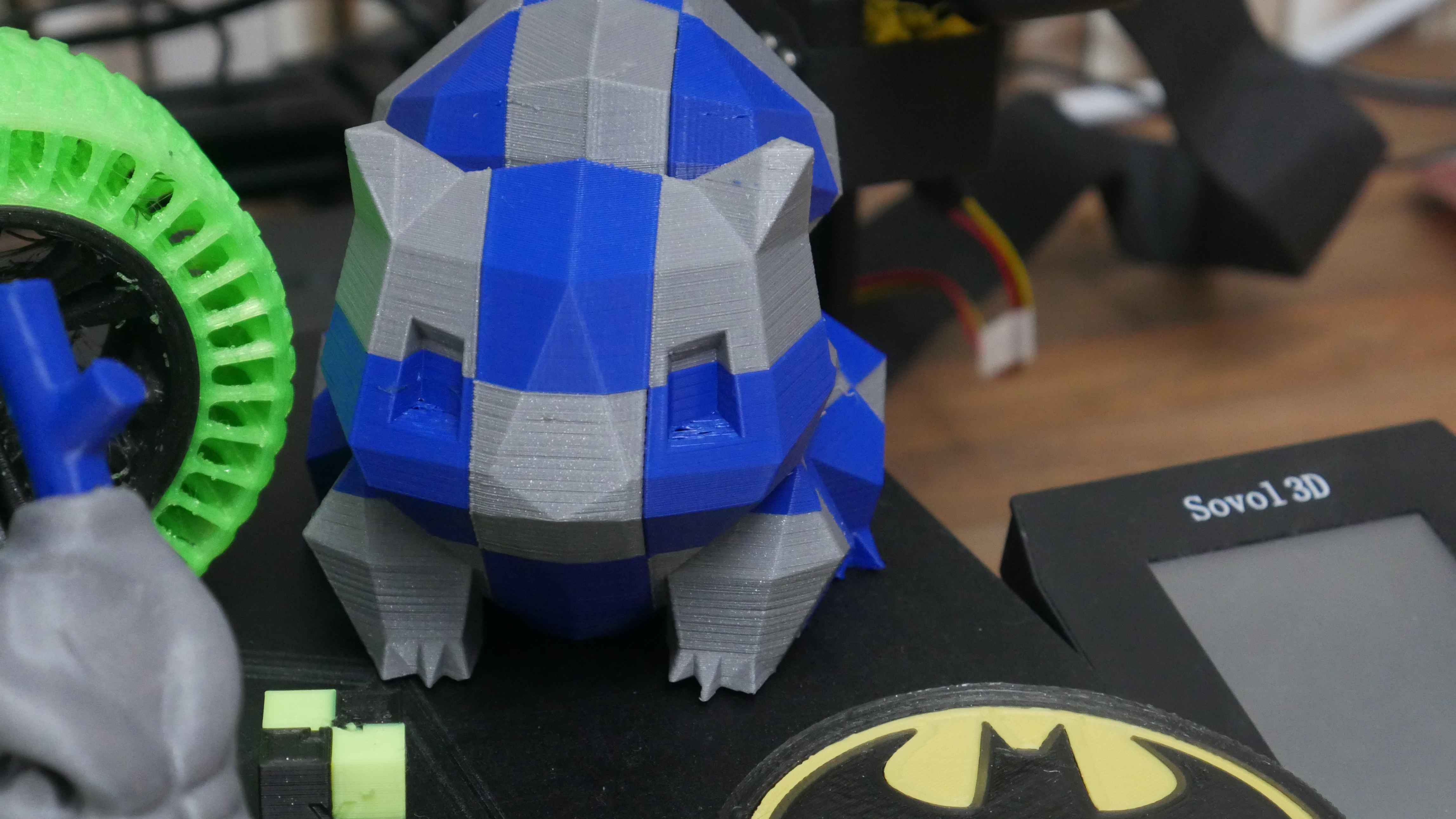
Lastly, and most importantly I think is the IDEX system itself. With two independent heads you can do so much you can print with two colours embedded on the same layer, for example, in this dragon model each layer has both silver and blue, the left head would lay down the blue parts, move out of the way and the right head with the silver filament would come in and do its layers. Because there is no ”contamination” of the other colour in the nozzle as there would be on things such as the Prusa MMU or the Palette 3 system, there is no need for a purge tower, just a bucket on the park position for the little filament poops to gather in.
But two colours of the same material is not all that IDEX can do, you can also experiment with two materials. I have used a black PLA for the rim of this wheel, but a fluorescent green TPU as the rubber tyre. These parts are a single unit, they cannot be separated, there was no assembly it was made in two materials at the same time, how neat is that!. You can also use something like PVA or BVOH which are water-soluble support materials, so you can use the printer as a single-head printer with a special support extruder, you don't need to worry about how to take it off or what it is going to look like as once the print is done, you put it in a bowl or room temperature/warm water (not hot or boiling though) and the support material with dissolve away leaving your part free and clean.
Specs
| Specs | Sovol SV04 |
| Build Volume | 300mm x 300mm x 400mm |
| Print Surface | Polycarbonate sheet on Flexible spring steel |
| Extruders | 3:1 geared Titan inspired |
| Nozzles | 0.4mm M6/V6 threads |
| Interface | 4.3" touchscreen, MicroUSB, Full SD Card |
| Accessories | Filament run-out sensor, 3D Touch |
What you’ll not like
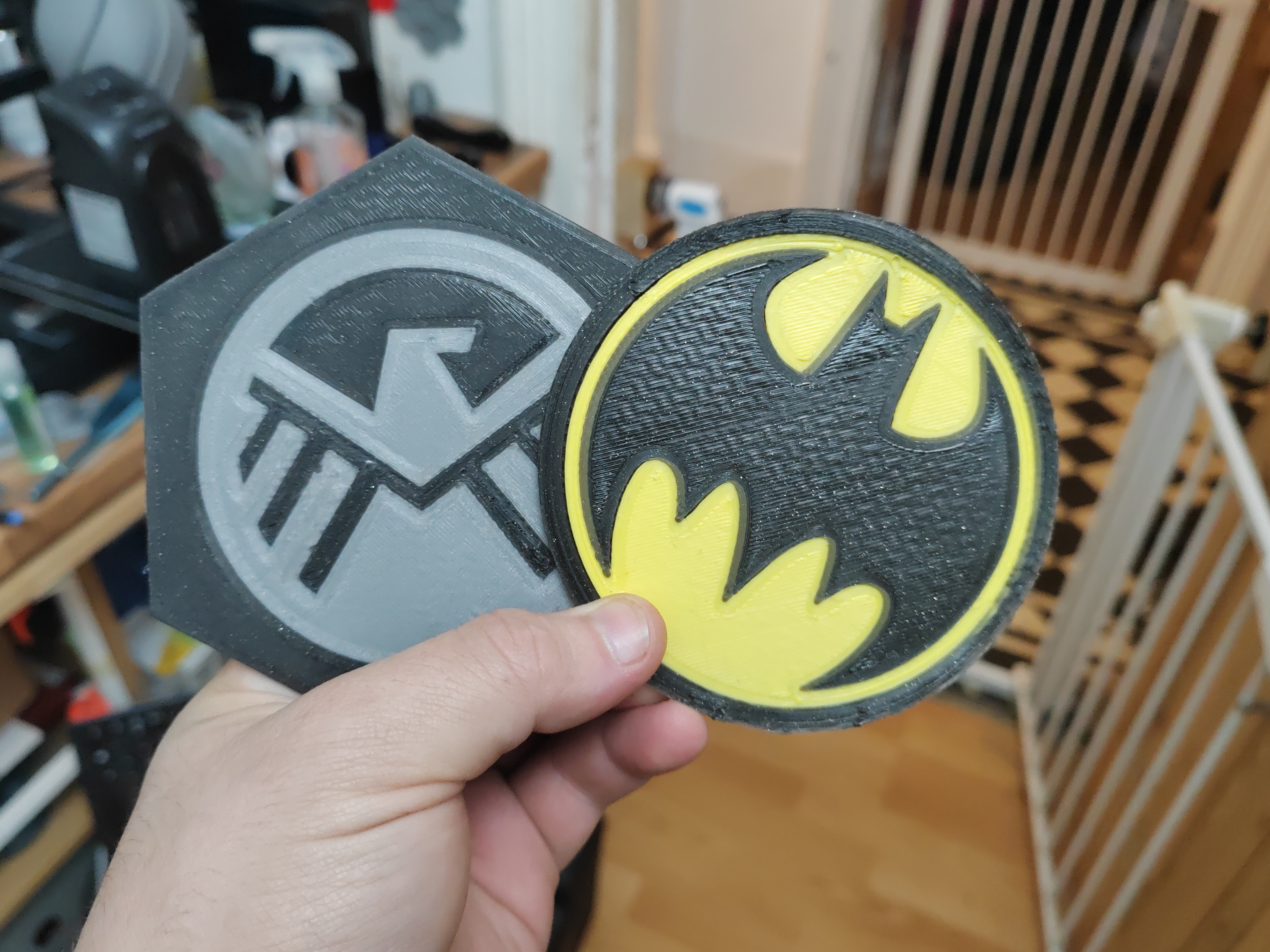
Whilst there is a bit to like about the SV04 it is hardly perfect. One of the bigger things is, well, the dimensions. The SV04 is huge, truly it takes up almost the same amount of space as my Kobra Max which has a 33% larger build volume. Obviously, it is going to be larger than other 300x300x400 printers, or at least wider because both heads need to be able to park far enough off the bed in order to not interfere with the other and ooze on the bed, so the nearly 70cm width of the SV04 is more comparable to the Kobra Max than many would think.
One of the other downsides of the SV04 is the PTFE lined hotend. By default PTFE lined hotends are limited in software to about 260c, however, I would like that to be lowered. PTFE, or Teflon as it’s known by brand name, starts to deteriorate around 240c and can start off-gassing noxious chemicals for birds and other pets. Whether you’re printing at 260c for one print overnight or 210c for PLA over a year PTFE also breaks down with repeated heating cycles and is a consumable, replacing the PTFE inside this heatbreak is convoluted and a pain. There are replacement heatbreaks available, and the better type is the bi-metallic ones, where they are copper and stainless steel they have very different thermal conduction properties which works well in this instance sovol sell packs of 3 for $13 and is one of the first things I would do here. Swapping the heatbreak out also allows you to reach higher temperatures, however, the software limit of 260c will still be in place, you can use that temperature in perpetuity knowing the metal will not break down.
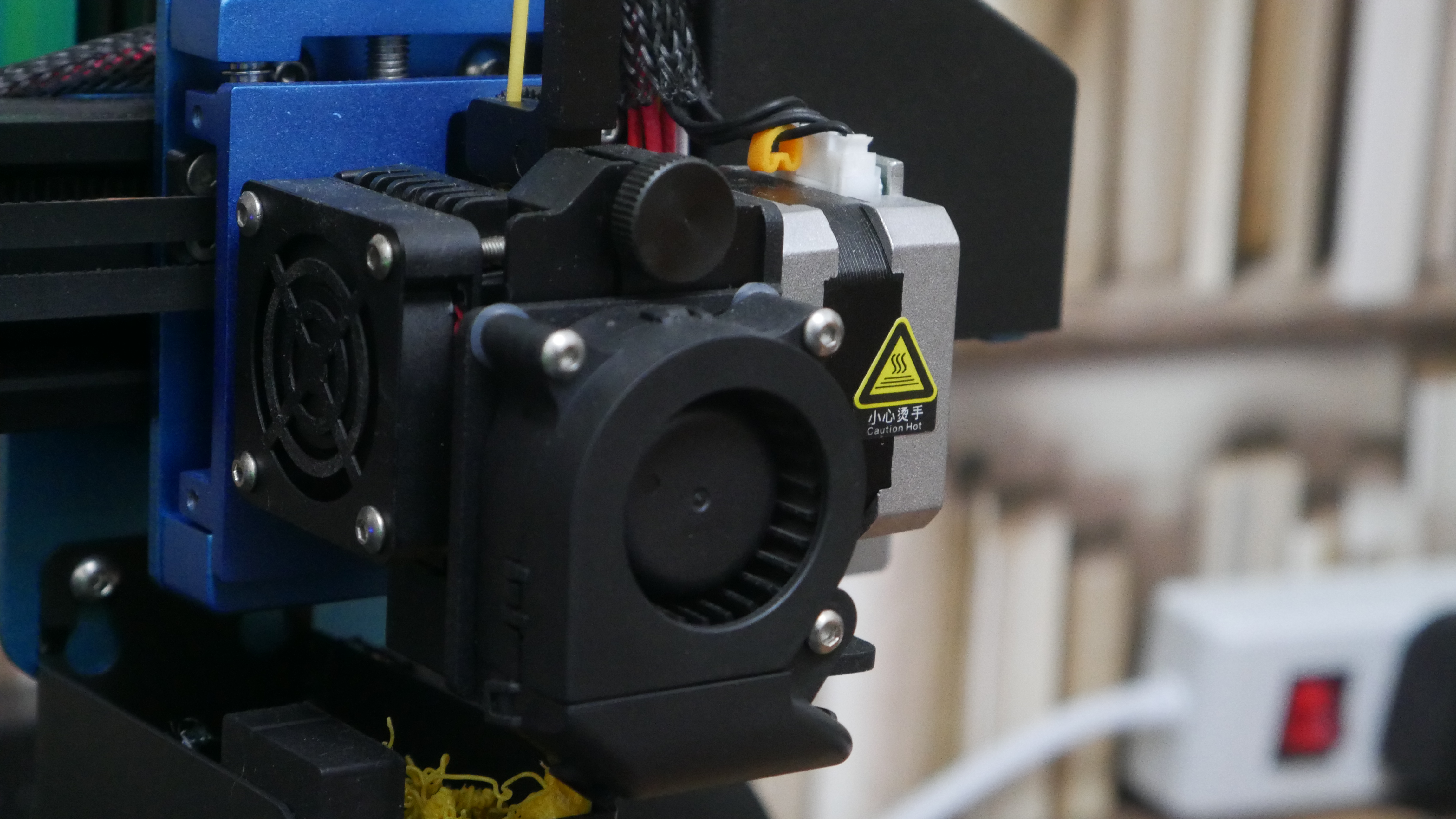
The biggest downside of the SV04 though is what makes it so special, the IDEX system. This is a manual IDEX printer which means one toolhead (the left one) is static, and the right can be lifted up and down to adjust for Z height discrepancies, but you also need to calibrate the X and the Y offsets. These are done by printing scales with a known distance and using a formula shown on a video on the SD card (also on their YouTube channel) to calculate the offset. This is incredibly tedious, and even when you think you’ve got it correct on one print, a new print might show it more obviously.
Having proper alignment is crucial, not just for multiple colour models, but for those times you use a different material for support, if the printer is not printing where it thinks it is printing, it is not going to have the correct outcome. Maybe you want to make a batman coaster, black and yellow, but the yellow toolhead is 0.2mm off, it doesn't sound like a lot, but that is half a nozzle width that's going to be incredibly noticeable. What makes it worse is that on my unit at least the offset drifted for the first week or two, requiring tweaking to get close.
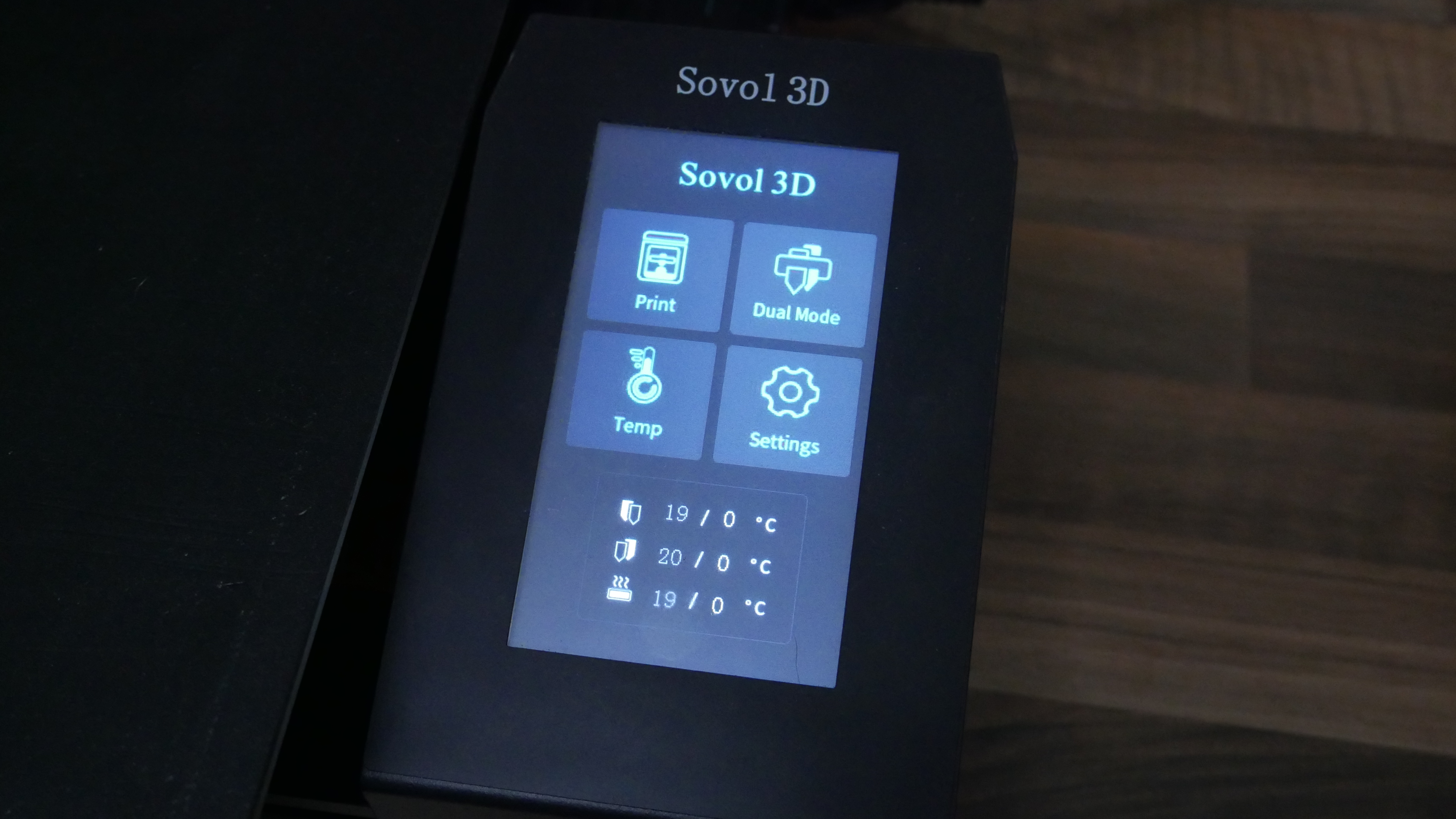
It isn’t even just that you have to align the second toolhead, for some inexplicable reason Sovol has decided that the large bed here should be installed on springs with levelling screws, so before you get to have fun, you have to manually level the bed with the four wheels, then set the height of the second hotend, then you get to run the Z axis tilt adjustment to make sure the printer is level, then you get to do the automatic bed mesh, and then you get to do the calibration prints to line up X and Y, and possibly have to reconfigure your Z offset as well. A printer of this size should have a rigidly mounted bed and you just use automatic bed levelling to get the rest sorted out.
Lastly, I know this is petty, but the SV04 is loud. Most of my printers when on but not in use are silent, all the fans will turn off and not make a peep, it’s lovely. The SV04 on the other hand has a fan in its power supply that is always on, whether it is being used or not, and it is a loud fan. Next are the hotend part cooling fans, these are blower fans and are notoriously noisy. When you have an IDEX print that goes on for 76 hours, loud fans are enough to make you go insane.
Competition
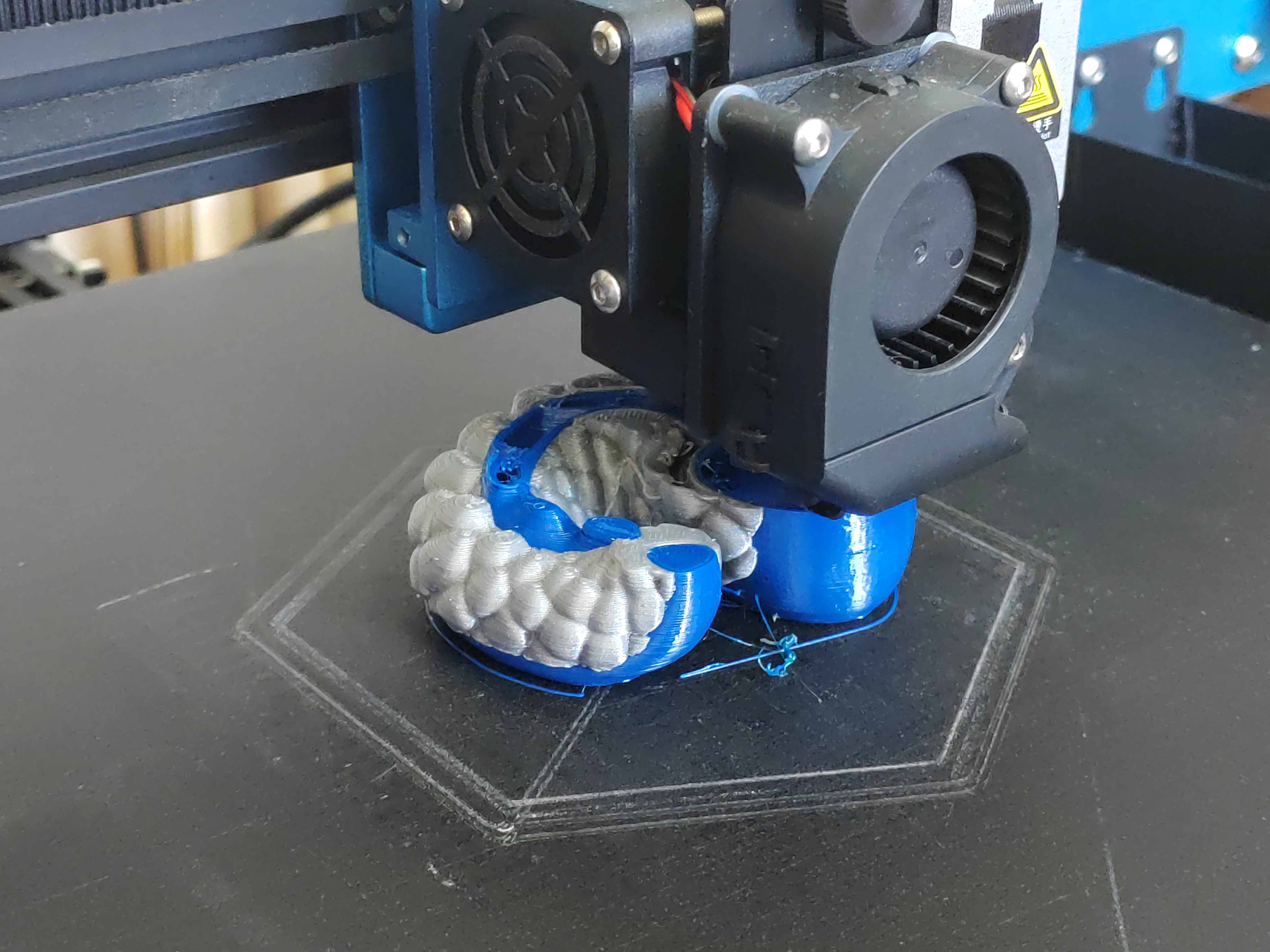
There is remarkably little competition in the IDEX market, especially not from established companies like Sovol. Craftbot’s Flow IDEX costs $3,300 and has a smaller bed with just 425mm(x) 250mm(y) and 250mm(z) however it has a much nicer automatic calibration routine, a built-in camera for print monitoring and rotary encoders so the printer can tell not just when it has run out of filament, but when there is a clog or a jam in the toolhead, and it will pause the print so you can fix it, which is amazing, but it is $3300, and that's the small one.
Other IDEX printers on the market are ones like the Kywoo3D Tycoon IDEX, an $899 printer currently selling for $799 with a smaller build volume of 220mm(x) 300mm(y) and 350mm(z). Not only is it more expensive with a smaller build volume it also has a notoriously unreliable extruder and hotend configuration. The TronXY Gemini S is remarkably similar to the SV04 in the fact it is around $550 and has a 300x300x390 build volume, however, the Gemini S has no automatic bed levelling, so not only do you have to calibrate the second extruder in X, Y and Z, you also have to do it for the first toolhead and hope your bed is flat enough to not need a bed mesh.
Should you buy it?
You should buy it if...
- You need to print two materials at once
- You want to print large things
- You want a direct drive extruder
You shouldn't buy this if...
- If you plan on having it in the room with you
- Are time sensitive
- You want to setup and print quickly.
IDEX 3D Printers are fascinating to me, this was the first one I’ve been able to test, and whilst it is not perfect, this has not dwindled my love and intrigue for new and different 3D printers. IDEX 3D Printers (and their toolhead increased cousin Toolchangers) do allow you to try out new ideas and workflows than a traditional FDM printer does, but it also requires more from you. The Sovol SV04 is a very good introduction to the world of IDEX and one that I can see a lot of people getting into and modifying in the future. I could see people swapping out fans for quieter ones or the extruders for things like the E3D Hemera Xs.
There really isn't another IDEX printer with this build volume for this price from a trusted company like this. I mentioned in the beginning Sovol uses parts from companies like creality, the benefit of them doing that is that they have access to an incredible swathe of products for repairs/RMAs, they don't have to do that R&D, and I think that as long as both companies are agreed on it, this is a very smart move on Sovol’s part.

